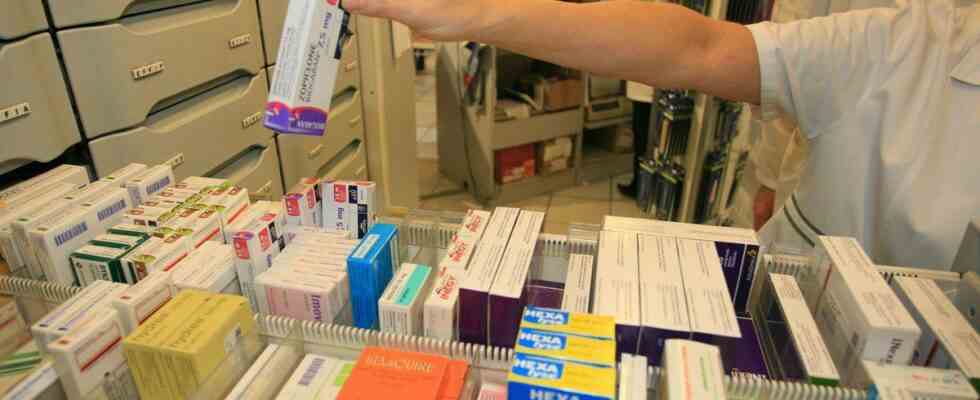During a visit to the pharmacy, one of the medications you needed was not available? A phenomenon that professionals in the sector, like patients, have already noticed for a few weeks and which is likely to continue. According to figures from the economic interest group (GIE) relayed by The Echoes, 12.5% of drug references were out of stock in mid-August, compared to 6.5% in January. A tense situation, which nevertheless has a taste of deja vu for the French pharmaceutical industry. 20 minutes analyze the causes.
Ruptures on drugs “of major therapeutic interest”
The numbers of theNational Medicines Safety Agency (ANSM), published on September 21 in its activity report 2021, confirm the trend drawn by the GIE. Reports – either ruptures or risks of ruptures – were reported on 2,160 drugs that year. In 2018, only 871 reports were recorded, 1,504 in 2019 and 2,446 in 2020. A surge from 2020, therefore, but which the ANSM explains by the fact that it urges laboratories to “declare the risks of ruptures and ruptures of stock as far upstream as possible” to reinforce “the financial penalties for laboratories that do not respect their obligations in this area”.
So which drugs are involved? In a communicated published on September 27, Elisabeth Stampa, president of Medicine for Europe, the European Union of Generic Drug Manufacturers, has widely spread concern about a risk of shortages in the latter. But they are not the only ones whose stocks may be insufficient to supply our pharmacies. According to the ANSM, the most exposed drugs are “of major therapeutic interest”, ie those which act on the nervous system, anti-infectives and anti-cancer drugs. And it is difficult to find alternatives. The latter, unlike many drugs for daily bobology, do not always have equivalent references. And a broken reference is “restocked in three months”, says Thomas Borel, scientific director at Drug companies (Leem).
A recurring tension
However, the tension in the drug supply chain is not new. “There has been a problem of adjusting supply and demand for a long time, which is only growing on the international level. Especially since demand is increasing by 6% every year,” observes Thomas Borel. In France, the price of drugs remains low and is strictly controlled by the State. The equation is all the more complicated as some French laboratories sell at a loss; the drugs sold are less expensive than they cost to manufacture. Especially “mature drugs whose price levels have become very low”, explains Thomas Borel. A finding that also applies to generics, which are also manufactured and sold at even lower prices than originators (the original drugs from which generic drugs are designed).
The solution ? Strive towards health sovereignty and “relocate the pharmaceutical industries in Europe”, is of the opinion Phillippe Besset, president of the Federation of Pharmaceutical Unions of France (FSPF). A fight that led to a victory for the FSPF, the production of paracetamol preparing to be relocated to France, more precisely to Isère, from 2023. Then, delete section 31 of the Social Security financing law for 2023. “To save money, the ministry intends to set up calls for tenders on certain drugs, the cheapest laboratory will win them and it will be the only one to be reimbursed, this which would aggravate the shortage,” laments Philippe Besset.
Rising transport costs and shortage of active ingredients
In addition to structural reasons, professionals in the sector share another much more contextual fear. While Russia is not a major drug exporter, its conflict with Ukraine has had an impact on rising energy and transport costs. “The price of inputs, that is to say aluminum, cardboard and glass, took 25%,” says Thomas Borel. Materials that are essential for the packaging of the drug. “The supply times are also longer, “by 25% on average”, according to the scientific director.
As for the price of raw materials, the same tension. Orders for active ingredients are currently more numerous. And those that pass our mainland neighbors to factories located in Southeast Asia, tend to be honored first. “Countries that pay more for the active ingredient come first,” emphasizes Philippe Besset. “Our country does not pass on all these increases to the sale prices of drugs, since there is no free price”, assures Thomas Borel. The sector therefore knows, even more than before, an economic equation, impossible to solve.

